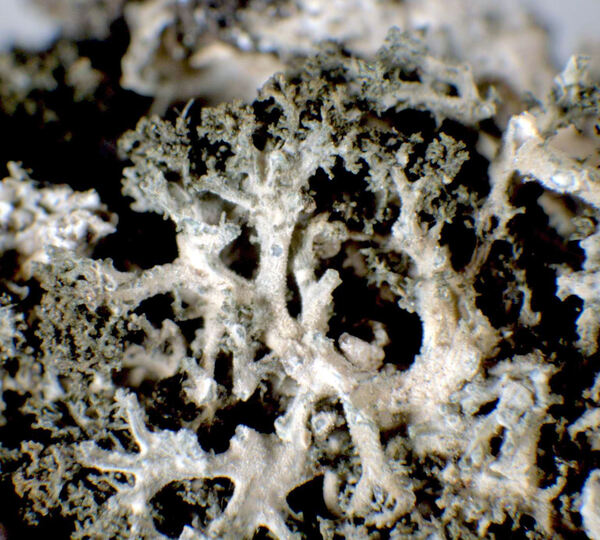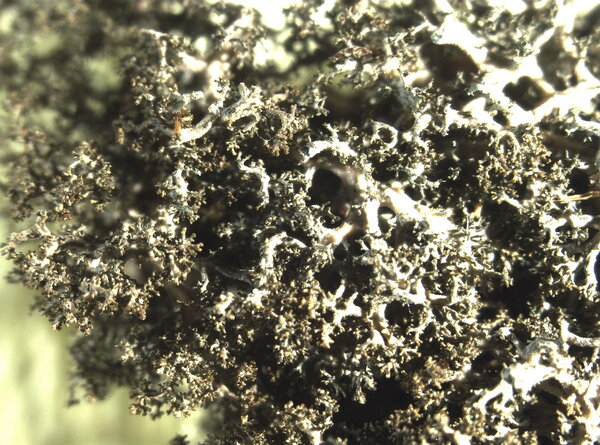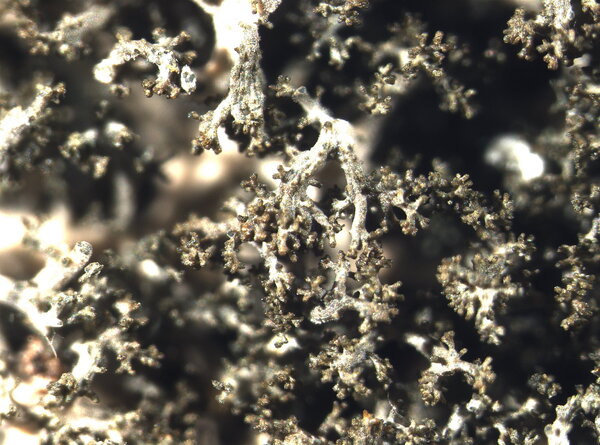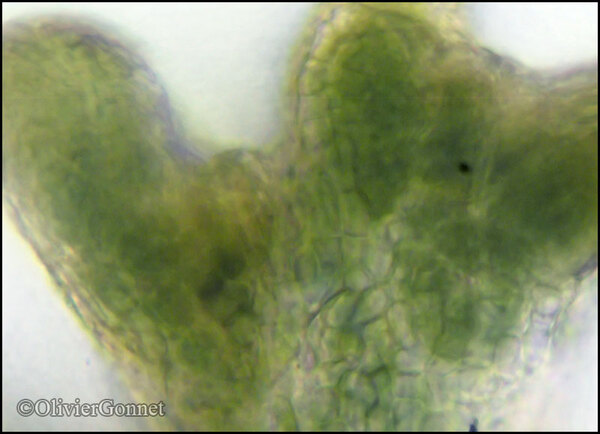Ricasolia amplissima (Scop.) De Not. - cyanomorph
Giorn. Bot. Ital., 2, 1.1: 179, 1846. Basionym: Lichen amplissimus Scop. - Fl. Carniol., 2nd ed., 2: 386, 1772
Synonyms: Dendriscocaulon bolacinum (Ach.) Nyl.; Dendriscocaulon dendroides auct. eur.; Dendriscocaulon umhausense (Auersw.) Degel.; Leptogium bolacinum (Ach.) Nyl.; Polychidium umhausense (Auersw.) Henssen
Distribution: N - Ven (Nascimbene 2003b, Nascimbene 2011), TAA (Dalla Torre & Sarnthein 1902, Nascimbene & al. 2007b), Lig (Brunialti & al. 1999, Brunialti & Giordani 2003, Giordani & Incerti 2008). C - Tosc (Putortì & Loppi 1999b, Benesperi & al. 2007, Brunialti & Frati 2010, Frati & Brunialti 2023), Umb (Ravera 1998, Ravera & al. 2006), Laz (Massari & Ravera 2002, Munzi & al. 2007, Genovesi & al. 2008, Ravera & Genovesi 2008), Abr (Nimis & Tretiach 1999), Sar (Zedda 1995, 2002, 2002b, Rizzi & al. 2011, Di Nuzzo & al. 2022). S - Camp (Nimis & Tretiach 2004, Nascimbene & al. 2010b, Ravera & Brunialti 2013, Catalano & al. 2016), Bas (Puntillo & al. 2009, Ravera & al. 2015d), Cal (Puntillo 1995, 1996, Puntillo & Puntillo 2004, Incerti & Nimis 2006), Si (Grillo 1998, Grillo & Caniglia 2004, Falco Scampatelli 2005, Grillo & Cataldo 2008, 2008b).
Description: Thallus small-fruticose, irregularly branched, 1-3 cm tall, consisting of terete to slightly flattened, apically coralloid branches originating from a subterete basal holdfast, forming bush-like cushions with a more or less distinct main stem, blue-grey to brown (darker at apices), often maculate, paler in the shaded interior of the cushions. Outer surface glabrous or sometimes minutely pubescent, with short, moniliform hairs; cortex of 3-4 layers of cells; interior hyphae longitudinally oriented and radiating out into the branches. Apothecia and pycnidia unknown. Photobiont cyanobacterial (Nostoc), radially arranged below the cortex in primary branches, more or less homoiomerous towards apices of secondary coralloid branchlets. Spot tests: all negative. Chemistry: without lichen substances.Note: on bark of broad-leaved trees and on epiphytic mosses in warm-humid areas, mainly Tyrrhenian in Italy. This is the cyanobacterial morph of R. amplissima. Besides the obvious differences in morphology, it has a rather different ecology and distribution, and perhaps it would deserve a separate name at infraspecific rank for ecologists who want to specify what morph they have recorded. However, these dendriscocauloid thalli can hardly be determined with certainty, as similar thalli are developed also by other lichens, such as Dendriscosticta wrightii. This morph is included in the Italian red list of epiphytic lichens as “Near-threatened” (Nascimbene & al. 2013c).
Growth form: Fruticose
Substrata: bark
Photobiont: cyanobacteria, filamentous (e.g. Nostoc, Scytonema)
Reproductive strategy: mainly sexual
Most common in areas with a humid-warm climate (e.g. most of Tyrrenian Italy)
Commonnes-rarity: (info)
Alpine belt: absent
Subalpine belt: absent
Oromediterranean belt: absent
Montane belt: absent
Submediterranean belt: extremely rare
Padanian area: absent
Humid submediterranean belt: very rare
Humid mediterranean belt: very rare
Dry mediterranean belt: absent
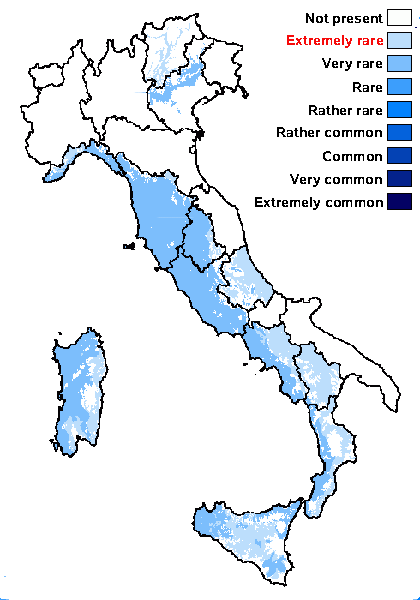
Predictive model
Herbarium samples
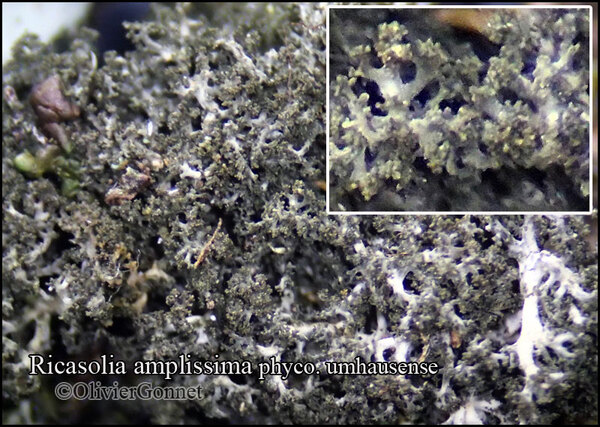
Courtesy Danièle et Olivier Gonnet - Source: https://www.afl-lichenologie.fr/Photos_AFL/Photos_AFL_R/Textes_R/Ricasolia_amplissima_umhausense.htm
France, 24/03/2014 - Miluccia - Corse
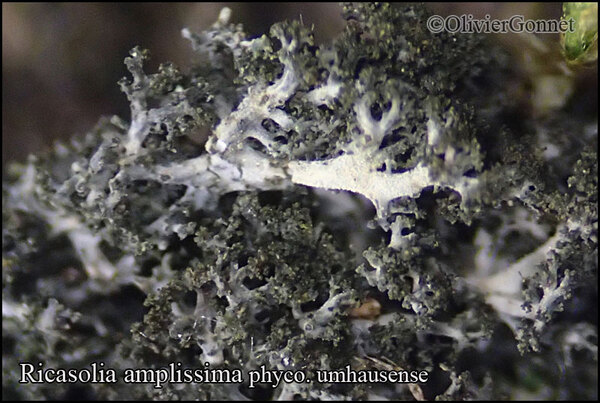
Courtesy Danièle et Olivier Gonnet - Source: https://www.afl-lichenologie.fr/Photos_AFL/Photos_AFL_R/Textes_R/Ricasolia_amplissima_umhausense.htm
France, 24/03/2014 - Miluccia - Corse
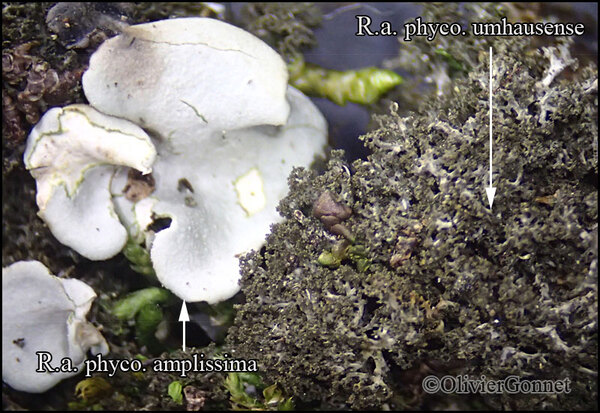
Courtesy Danièle et Olivier Gonnet - Source: https://www.afl-lichenologie.fr/Photos_AFL/Photos_AFL_R/Textes_R/Ricasolia_amplissima_umhausense.htm
France, 24/03/2014 - Miluccia - Corse

Courtesy Danièle et Olivier Gonnet - Source: https://www.afl-lichenologie.fr/Photos_AFL/Photos_AFL_R/Textes_R/Ricasolia_amplissima_umhausense.htm
France, 24/03/2014 - Miluccia - Corse
Growth form: Fruticose
Substrata: bark
Photobiont: cyanobacteria, filamentous (e.g. Nostoc, Scytonema)
Reproductive strategy: mainly sexual
Most common in areas with a humid-warm climate (e.g. most of Tyrrenian Italy)
Commonnes-rarity: (info)
Alpine belt: absent
Subalpine belt: absent
Oromediterranean belt: absent
Montane belt: absent
Submediterranean belt: extremely rare
Padanian area: absent
Humid submediterranean belt: very rare
Humid mediterranean belt: very rare
Dry mediterranean belt: absent

Predictive model
| Herbarium samples |

Courtesy Danièle et Olivier Gonnet - Source: https://www.afl-lichenologie.fr/Photos_AFL/Photos_AFL_R/Textes_R/Ricasolia_amplissima_umhausense.htm
France, 24/03/2014 - Miluccia - Corse

Courtesy Danièle et Olivier Gonnet - Source: https://www.afl-lichenologie.fr/Photos_AFL/Photos_AFL_R/Textes_R/Ricasolia_amplissima_umhausense.htm
France, 24/03/2014 - Miluccia - Corse

Courtesy Danièle et Olivier Gonnet - Source: https://www.afl-lichenologie.fr/Photos_AFL/Photos_AFL_R/Textes_R/Ricasolia_amplissima_umhausense.htm
France, 24/03/2014 - Miluccia - Corse

 INDEX FUNGORUM
INDEX FUNGORUM
 GBIF
GBIF
 DOLICHENS
DOLICHENS
